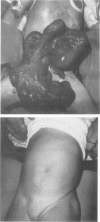Abstract
OBJECTIVE: This study analyzed the factors influencing the postoperative results after the repair of gastroschisis defects during the past 27 years. SUMMARY BACKGROUND DATA: The clinical results after the repair of gastroschisis abdominal defects have improved appreciably during the past 25 years, with the long-term survival rate in most large children's centers currently being approximately 90%. The improvement in survival has been largely attributed to advances in perioperative care, frequent use of parenteral nutrition, and better techniques of surgical repair. METHODS: Between 1965 and 1992, 84 infants with gastroschisis underwent surgical repair. The management of 52 infants after 1979 was compared with that of 32 during the previous 14 years. Associated anomalies were present in 29%. The average birth weight was 2412 g. In 31%, primary fascial closure was performed. In another 31% with moderate visceroabdominal disproportion (VAD), a silastic chimney was used initially, and complete repair was performed at a second operation. For 25% who had severe VAD, more than two operative reconstructions were necessary. Seven of 52 infants with moderate VAD underwent initial skin-flap closure and secondary repair within 12 days. RESULTS: Almost all complications (27%) and deaths (4%) occurred in infants with severe VAD and were largely unrelated to associated malformations or birth weight. The length of postoperative mechanical ventilation, need for parenteral nutrition, need for multiple operations, and length of hospitalization were all directly related to the severity of the VAD. CONCLUSIONS: Complete repair of gastroschisis at the initial operation is the optimal goal; however, the severity of VAD has permitted this approach in only one third of patients in this study. Delayed repair with a silastic chimney and one or more reconstructive procedures has provided excellent long-term survival with low morbidity and mortality rates. Although skin-flap closure is no longer used initially, this technique has been helpful for the residual defect in infants with severe VAD who have had multiple silon chimney repairs (Applied Biomaterial, Silverdale, WA).
Full text
PDF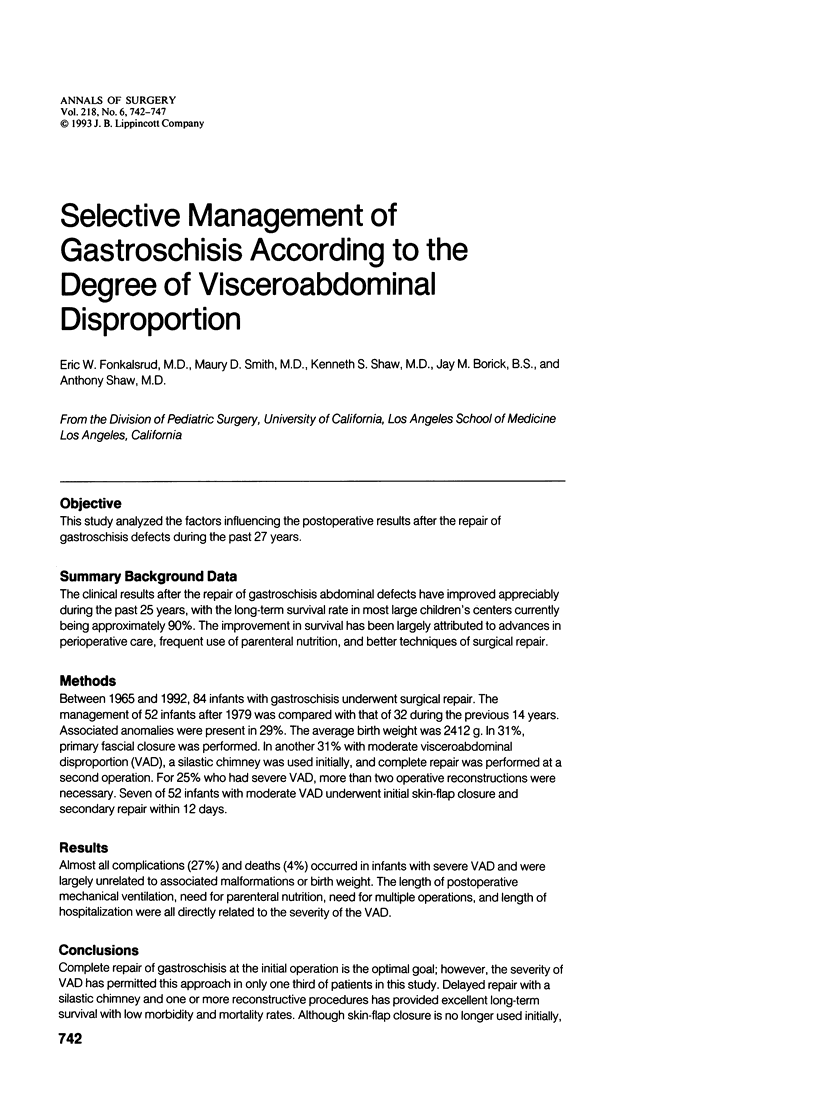

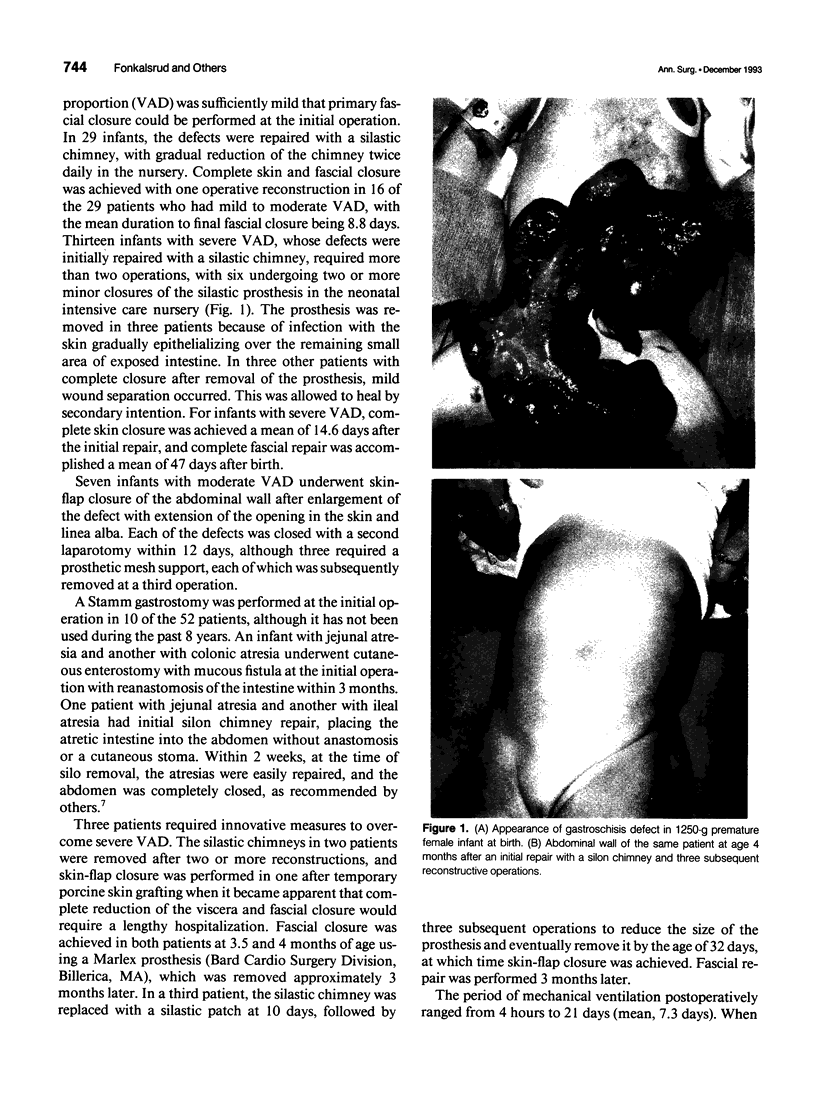
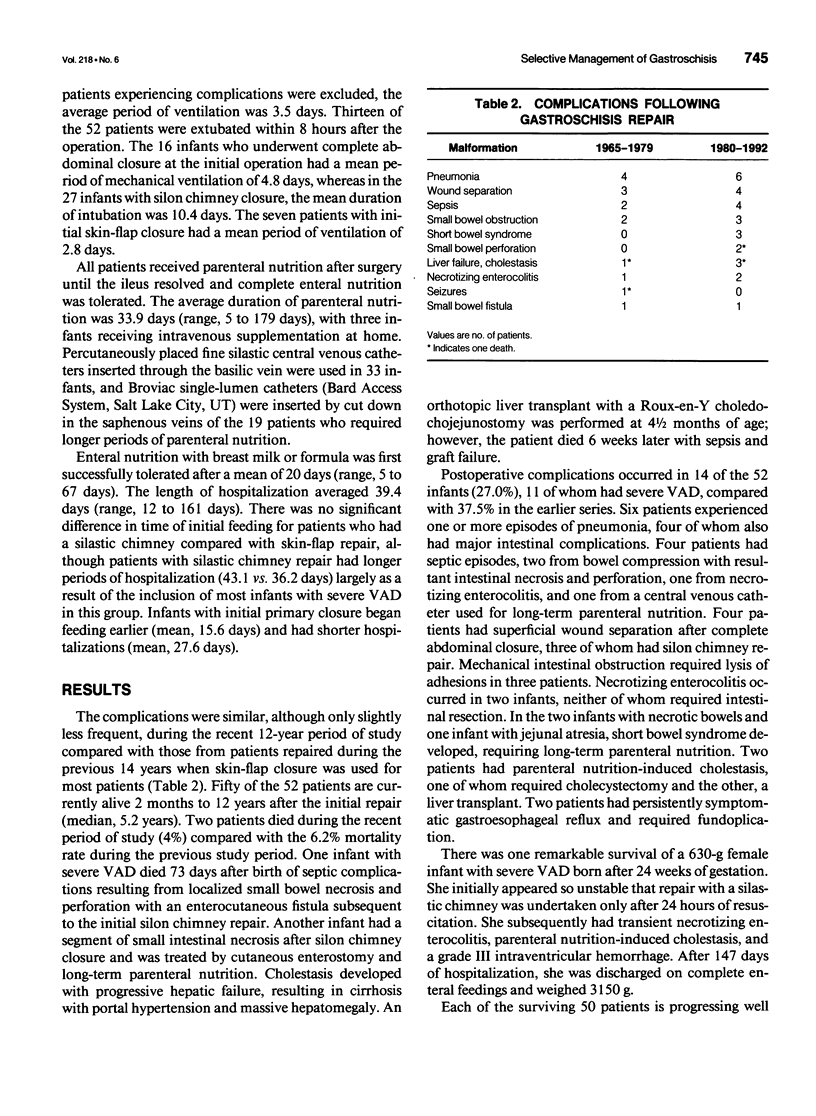
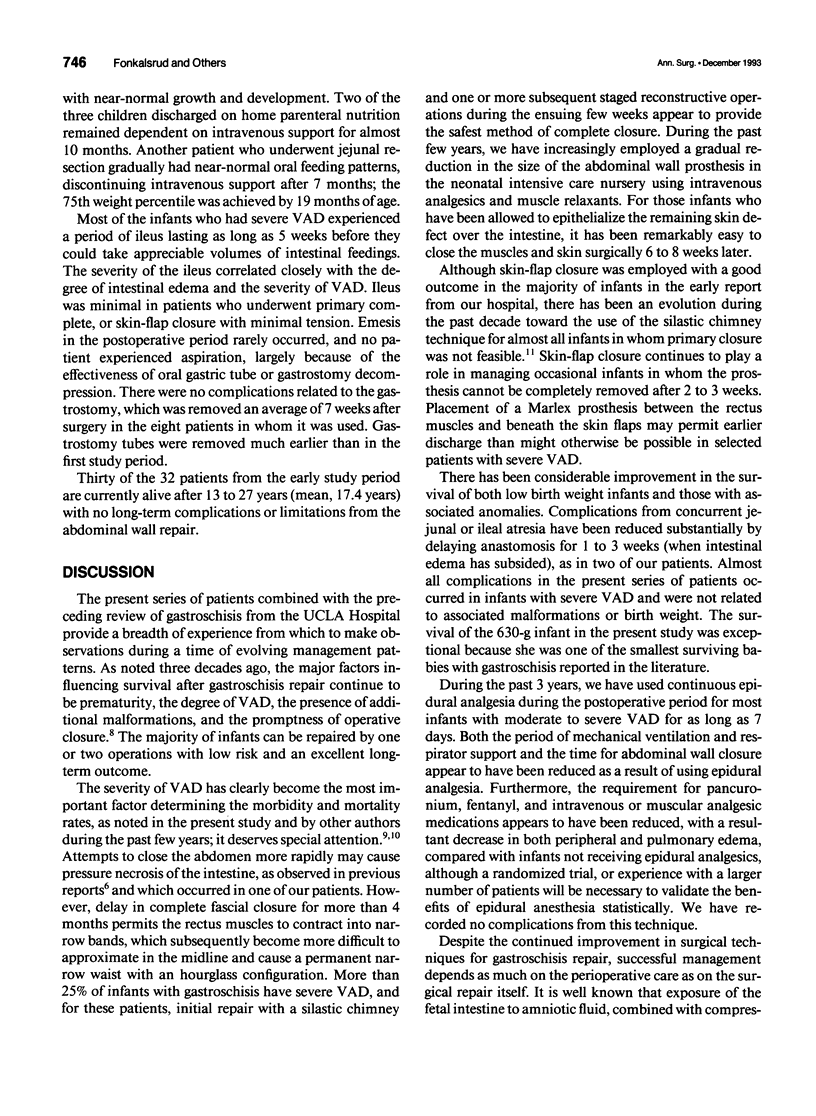
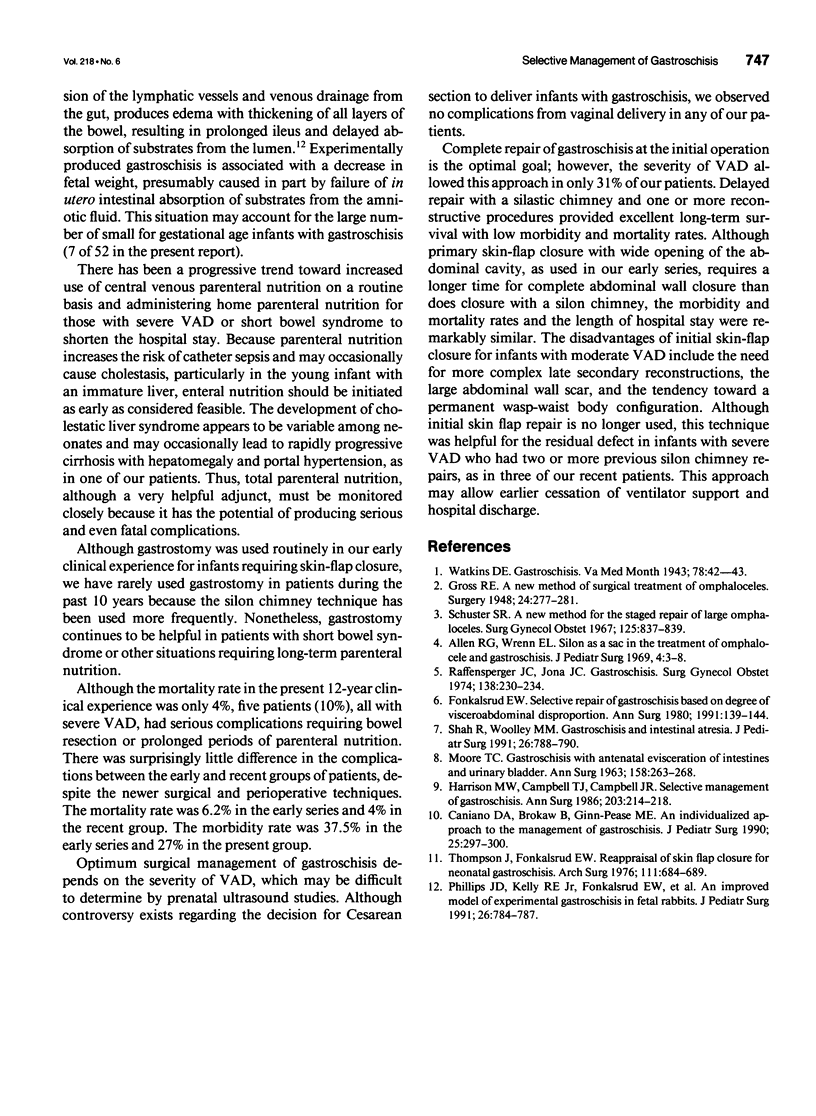
Images in this article
Selected References
These references are in PubMed. This may not be the complete list of references from this article.
- Caniano D. A., Brokaw B., Ginn-Pease M. E. An individualized approach to the management of gastroschisis. J Pediatr Surg. 1990 Mar;25(3):297–300. doi: 10.1016/0022-3468(90)90070-p. [DOI] [PubMed] [Google Scholar]
- Fonkalsrud E. W. Selective repair of neonatal gastroschisis based on degree of visceroabdominal disproportion. Ann Surg. 1980 Feb;191(2):139–144. doi: 10.1097/00000658-198002000-00002. [DOI] [PMC free article] [PubMed] [Google Scholar]
- MOORE T. C. GASTROSCHISIS WITH ANTENATAL EVISCERATION OF INTESTINES AND URINARY BLADDER. Ann Surg. 1963 Aug;158:263–269. doi: 10.1097/00000658-196308000-00017. [DOI] [PMC free article] [PubMed] [Google Scholar]
- Phillips J. D., Kelly R. E., Jr, Fonkalsrud E. W., Mirzayan A., Kim C. S. An improved model of experimental gastroschisis in fetal rabbits. J Pediatr Surg. 1991 Jul;26(7):784–787. doi: 10.1016/0022-3468(91)90138-j. [DOI] [PubMed] [Google Scholar]
- Raffensperger J. G., Jona J. Z. Gastroschisis. Surg Gynecol Obstet. 1974 Feb;138(2):230–234. [PubMed] [Google Scholar]
- Schuster S. R. A new method for the staged repair of large omphaloceles. Surg Gynecol Obstet. 1967 Oct;125(4):837–850. [PubMed] [Google Scholar]
- Shah R., Woolley M. M. Gastroschisis and intestinal atresia. J Pediatr Surg. 1991 Jul;26(7):788–790. doi: 10.1016/0022-3468(91)90139-k. [DOI] [PubMed] [Google Scholar]
- Swartz K. R., Harrison M. W., Campbell J. R., Campbell T. J. Selective management of gastroschisis. Ann Surg. 1986 Feb;203(2):214–218. doi: 10.1097/00000658-198602000-00016. [DOI] [PMC free article] [PubMed] [Google Scholar]
- Thompson J., Fonkalsrud E. W. Reappraisal of skin flap closure for neonatal gastroschisis. Arch Surg. 1976 Jun;111(6):684–687. doi: 10.1001/archsurg.1976.01360240064011. [DOI] [PubMed] [Google Scholar]



